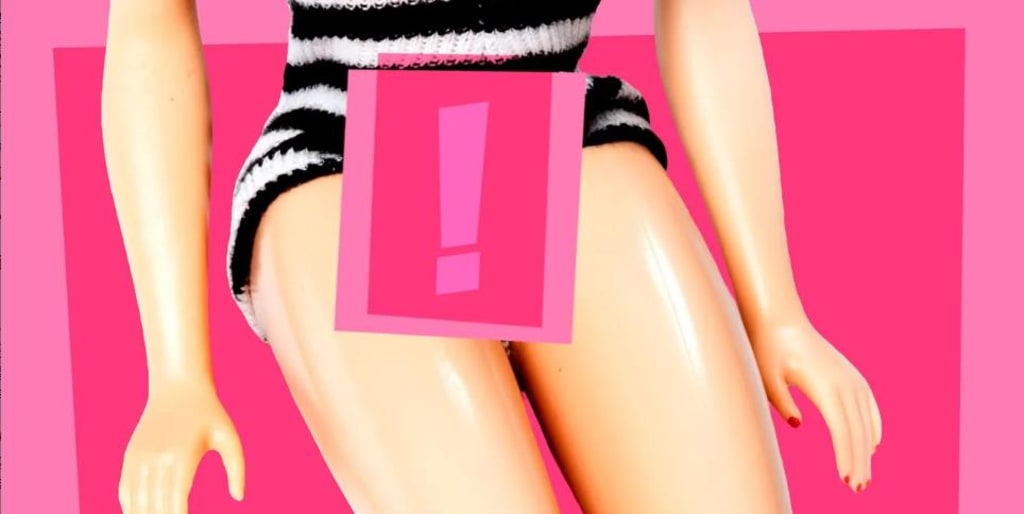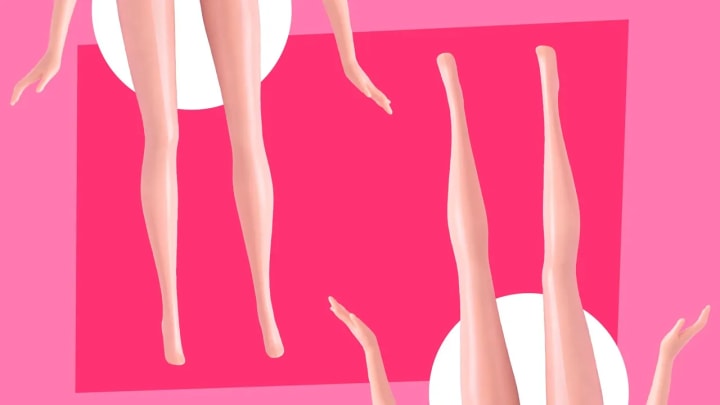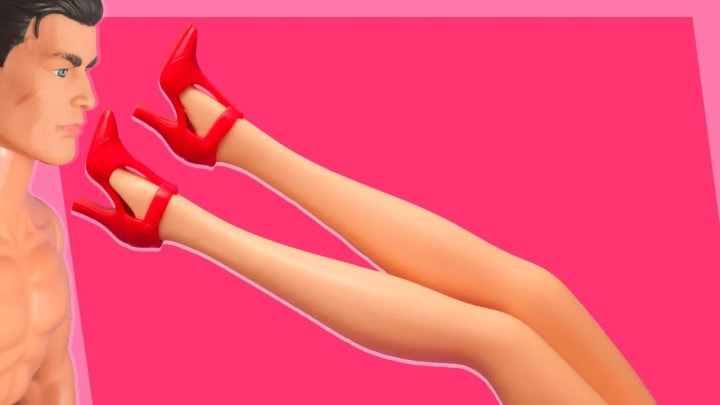What is vulvodynia?
Medical texts first documented this painful, life-disrupting condition in 1880. But with doctors still unsure of its cause – or cure – one woman has taken matters into her own hands.

When the pain started, Tara Langdale-Schmidt didn’t think much of it. It was a soreness that came and went while going to the toilet, or after she and her husband had sex.
She had undergone a string of surgical procedures through the years because of her battle with endometriosis – a disorder in which the tissue that normally lines the uterus grows outside of it – so she figured the pain was due to her medical history and hoped it would soon pass.
Instead the pain worsened, becoming overwhelming as the weeks went by.
You might also like these other stories in the Health Gap:
• The mystery of the pelvic floor
• Why are doctors dismissing women's pain?
• The case for renaming women's body parts
“After a while it felt like someone was cutting me in half at the 6 o’clock mark and burning me with a cigarette inside my vagina at the same time,” says Langdale-Schmidt. “Here I was trying to have sex with my husband, and all I’m doing is trying not to cry and ruin the moment. It was agony.”

I literally had one doctor tell me to drink some wine and take an Advil and just relax – Tara Langdale-Schmidt
She went to a string of doctors. Some were flummoxed. Most just brushed her off. “I literally had one doctor tell me to drink some wine and take an Advil and just relax. Another doctor, before he even examined the area, told me he could cut out the part that hurt or put me on an antidepressant. What if I’d had an STD, or cancer? I never went back to either of them, obviously.”
Furious, frustrated and in agony, Langdale-Schmidt, who was 28 at the time, decided to do research herself. After digging deep into online women’s health discussions and medical forums, she found thread discussions about vulvodynia, a little-understood condition described as chronic pain or discomfort around the opening of the vagina.
The American College of Obstetrics and Gynecology defines vulvodynia as vulva pain that lasts three months or longer and is not caused by an infection, skin disorder or other medical issue; the condition can come on suddenly or slowly progress with time. There are two types. Generalised vulvodynia can be found in different areas of the vulva at different times. The pain may be constant or can come and go. Localised vulvodynia is described as pain found in one specific area of the vulva. Often associated with a burning sensation, this type of the condition is usually provoked by touch or pressure, such as sexual intercourse, inserting a tampon, or prolonged sitting. The pain, burning, irritation, or rawness can make a woman so uncomfortable that having sex, or even sitting for long periods of time, becomes unthinkable.

Some women who have this condition can’t even wear underwear or trousers because the pain is so intense – Angie Stoehr
“It can be incredibly debilitating,” says Angie Stoehr, director of the Stoehr Center for Pelvic and Intimate Pain. “Some women who have this condition can’t even wear underwear or [trousers] because the pain is so intense. It’s a huge quality-of-life issue and it can be difficult to treat.”
Vulvodynia was first documented in medical texts in 1880, described as “supersensitiveness of the vulva” and “a fruitful source of dyspareunia” (painful intercourse), according to Lisa Goldstein, executive director of the National Vulvodynia Association. Today, research shows that 16% of women in the US suffer from vulvodynia at some point in their lives.
But due to a variety of factors – including the difficulty of studying such a sensitive subject, variations in definitions and diagnostic criteria and a historic lack of research on health conditions that primarily affect women – it has gone under-researched. In 2011, more than 80 researchers came together for a conference on the state of vulvodynia research at the National Institute of Child Health and Human Development in the US. “Participants at the conference agreed that the evidence base for vulvodynia research is sparse, and that there is insufficient scientific evidence to form a consensus on preferred methods of diagnosis and treatment,” they concluded. Their report added that participants agreed that moving forward required expertise from scientists in neurology, pain research and other areas, but that “too few investigators in all fields, but particularly in fields other than gynecology, were sufficiently knowledgeable and interested in vulvodynia”.

As a result, the condition largely remains a mystery. There is often no identifiable cause, and there is no one-size-fits-all cure.
It often “takes a team of specialists to diagnose vulvodynia and other pelvic pain disorders,” says Rachel Gelman, a pelvic floor physical therapist at the Pelvic Health and Rehabilitation Center in San Francisco. “There are so many systems that meet and connect in the pelvis, all of which could be the primary driver of the pain.”
Some research has linked vulvodynia to autoimmune disorders, nerve damage, allergic reactions, chronic yeast infections and even ethnicity, says Stoehr. The risk of getting vulvodynia is also heightened by psychological conditions like depression and anxiety, as well as potentially by childhood events like chronic stress or sexual abuse.
There is often no identifiable cause, and there is no one-size-fits-all cure
One recent theory has been that vulvodynia’s symptoms may stem not from the affected part of the body, but in the brain – as is the case with other chronic pain disorders. Research has found that sufferers have more grey matter in the areas of their brain that process pain and stress. In other words, the problem may not be in the pelvic area. It may be in how the brain is processing signals from it.
As a result, some women are trying to find their own solutions. Knowing that vaginal dilators are used to restore vaginal capacity, helping to widen it and restore elasticity to the tissue, Langdale-Schmidt decided to get creative. From her previous experience using Neodymium magnets to reduce back and neck nerve pain after a car accident, she decided to put the two together, hollowing out a dilator, filling it with the magnets, and, twice a day for 20 to 30 minutes, using it on herself. The use of the device immediately reduced pain during sex by about 60%, she says; when she used it right before intercourse, she says the pain subsided by 90%. She named her product the Vuva Magnetic Dilator.
When she gave a prototype to other women with pelvic pain, she says, “I was getting all these messages from women saying things like, ‘I never thought I was going to be able to have sex again,’ and ‘You saved my marriage”’.

There is little research in Western medicine that proves the efficacy of magnetic therapy, which is based on the idea that all living organisms exist in a magnetic field – and that healing happens when electromagnetic energy is brought back in balance. Magnets, which are purported to increase blood flow and relax overactive nerves, have had a central role in Chinese medicine for more than 2,000 years. But various studies have found that no evidence that magnets relieve pain or can treat medical conditions.
While some people seem to benefit from magnet therapy, they benefit just as much when given a placebo – meaning any relief may have psychological, not physiological, origins.
“There isn’t a lot of good proof in scientific literature on magnets and pain,” says Stoehr. Still, she sometimes suggests the VuVa dilator to patients with vulvodynia or vaginismus, a similar condition that affects a woman's ability to engage in vaginal penetration. “It’s also something that usually isn’t going to harm a patient,” she says. “Because pelvic pain disorders are so hard to treat, I encourage my patients to try different kinds of treatments until we find something that works.”
Options which Gelman says she is more likely to use, on the other hand, include manual therapy techniques including trigger point release, connective tissue manipulation, myofascial decompression therapy, or cupping.
Not only is vulvodynia physically painful, it can take an emotional and mental toll on women and their most intimate relationships, as well. Many suffering from the condition do not come forward because of the shame and stigma that can be attached to open discussions about sexual health.

Langdale-Schmidt says she was lucky her husband was so supportive during that time: “he was very understanding and never pushed me to do anything that would cause me pain.” But she has met many other women who have not had the same experience.
“I’ve met so many women who were just at the end of their ropes, women who’d say things like, ‘My husband divorced me because of this,’ and ‘I don’t want to live anymore.’ Or ‘Doctors can’t help me. I burn 24 hours a day. I feel so defeated,’” says Langdale-Schmidt.
It’s a huge disruption in people’s lives and can be very socially isolating, says Stoehr, who has had patients go through divorces sparked by their conditions. Others have missed extensive time working or can’t work because of the pain.

“Women have come in asking, ‘Is there something wrong with me or am I just crazy?’” Stoehr says.
There are ways to cope with the pain and treat symptoms of the condition, says Stoehr. But it may take time to find the proper therapy for each individual. “This isn’t the common cold,” she said. Rather it often requires symptom management for the rest of the patient’s life.
“It’s so important for women to be their own advocates, especially for chronic conditions that don’t have a lot of research,” said Stoehr. “And, sometimes, if you’re like Tara, you get so frustrated that you go and invent something yourself.”
“I could talk about my vagina all day if it’s going to help other women,” said Langdale-Schmidt. “I like to say I’m 'vagina famous'.”
This story is part of the Health Gap, a special series about how men and women experience the medical system – and their own health – in starkly different ways.






Comments
There are no comments for this story
Be the first to respond and start the conversation.